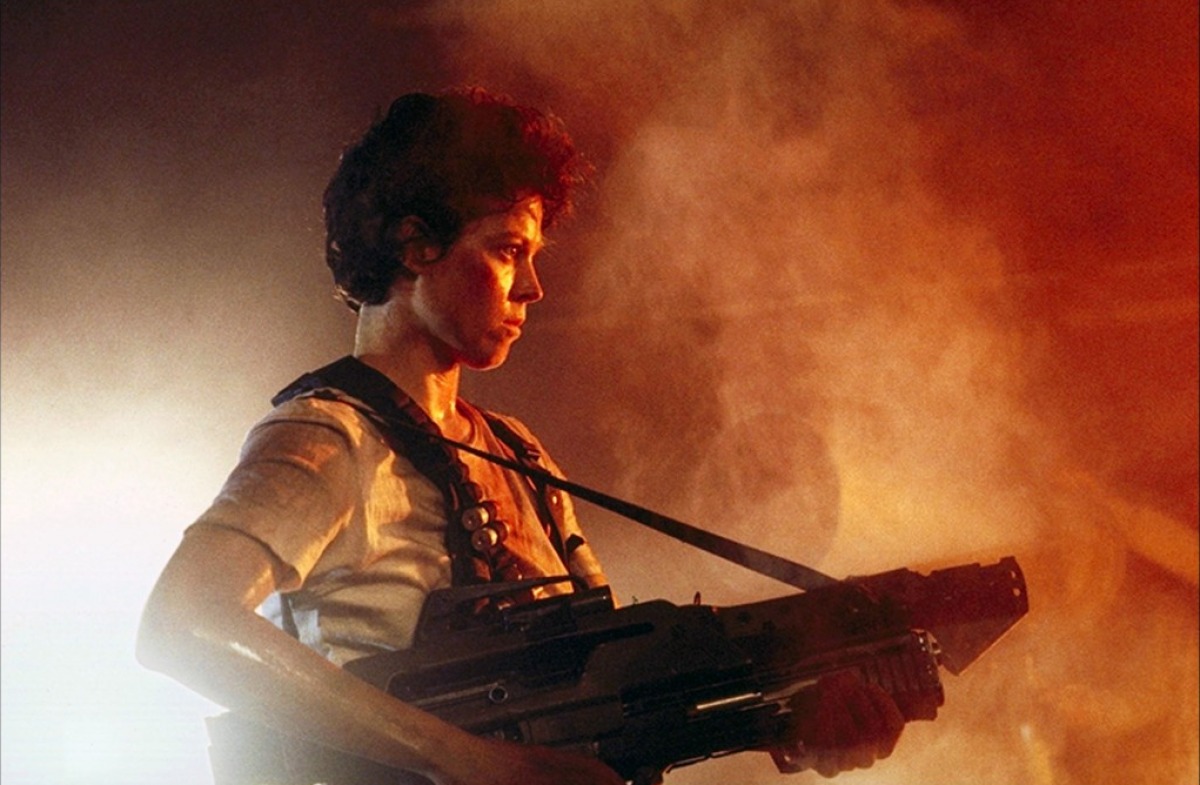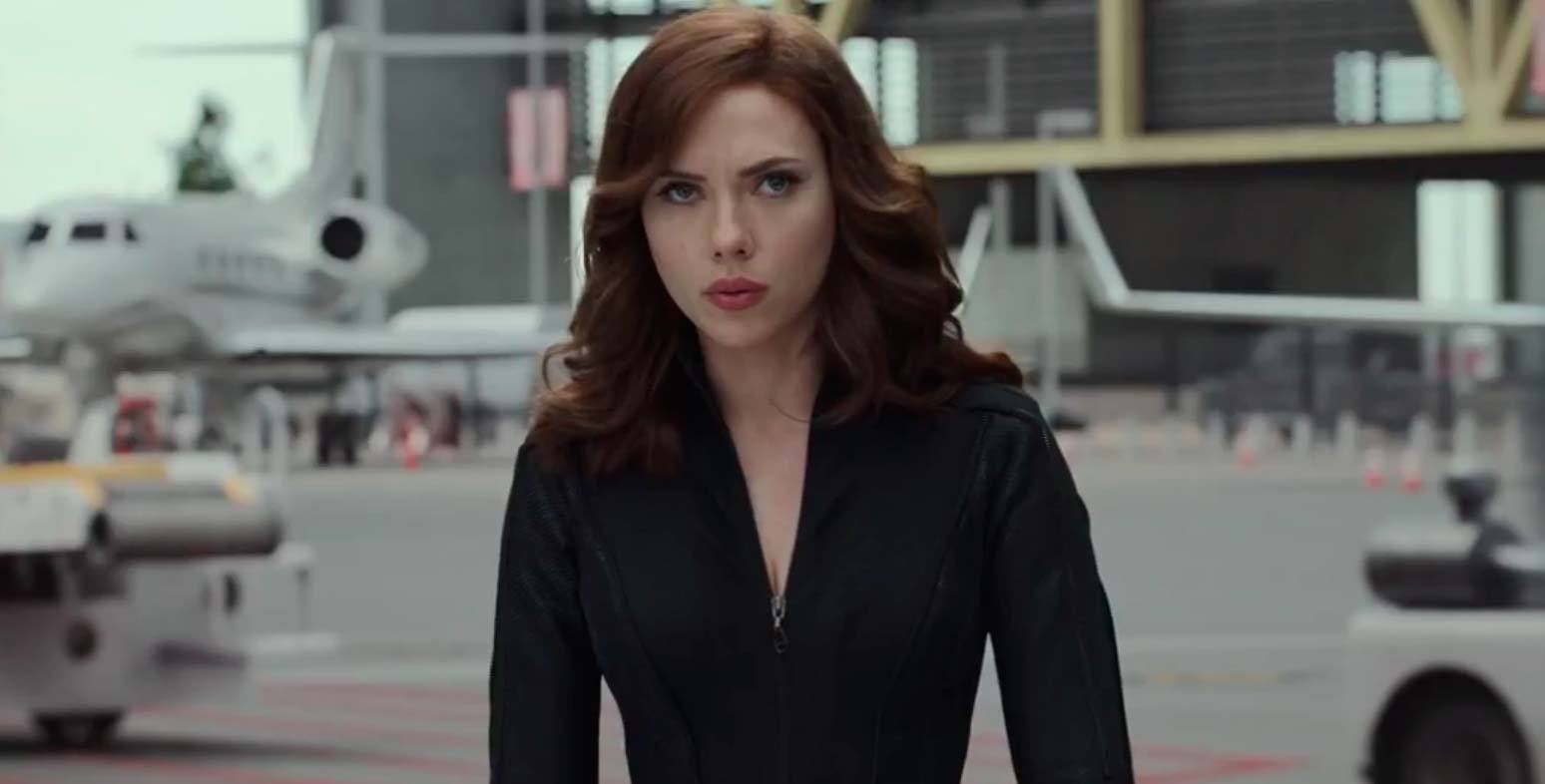This guest post written by Kayleigh Watson appears as part of our theme week on Ladies of the 1980s. | Spoilers ahead.
When Ridley Scott cast Ripley (Sigourney Weaver) in Alien, he created The First: The First Action Heroine; The First Female in a Science Fiction Film That Did Not Have To Be Rescued or Was Not Brunch for a Swamp Monster. Such titles may as well be monikers attached to her name. Ripley was important, and still is, her legacy living on in many an action heroine that followed: Buffy (the Vampire Slayer), The Bride (Kill Bill), G.I Jane, Trinity (The Matrix), Furiosa (Mad Max: Fury Road) and Sarah Connor’s transformation in Terminator 2.
It is science fiction fact however, that Ellen Ripley should not have been “Ellen Ripley” at all. Dan O’Bannon’s original script for Alien stated: “The crew is unisex and all parts are interchangeable for men and women.” In the climate of the time, it is wholly plausible that Ripley was intended to be a male, as despite the script’s stated gender ambiguity, the original name for the character was still “Martin Roby.” So far so standard for horror and sci-fi, for the genres had always been male-dominated whether it be characters on-screen or in literature or those who create them. After all, it was not until the New Wave of sci-fi that women began to truly stake their claim on the genre, birthing feminist science fiction and writers such as Margaret Atwood, Joanna Russ, Marge Piercy, Ursula K. LeGuin and the singular entity that is Octavia Butler — C.L. Moore and Leigh Brackett being exceptions in the “Golden Age,” and Brackett went on to contribute to the screenplay of The Empire Strikes Back.
“I don’t see it as that revolutionary to cast a female as the lead in an action picture,” said O’Bannon. “It didn’t boggle me then, and it doesn’t boggle me now. My conception from scratch was that this would be a co-ed crew. I thought there was no reason you had to adhere to the convention of the all-male crew anymore.
After all, Star Trek had already had a mixed gender crew for years, and Ridley Scott had a similar reaction when the prospect of making the character female was pitched to him (“I just said, ‘That’s a good idea.”’). Scott later said in an interview:
“My film has strong women simply because I like strong women… It’s a personal choice. I’m no male chauvinist, nor do I understand female chauvinism – I just believe in the equality of men and women. It’s as simple as that.”
In Alien itself, Ripley – portrayed by the then largely unknown actress Sigourney Weaver – blended into the background of the team of the Nostromo crew; she was straightforward in conduct, voicing her opinion, making decisions, contributing to physical work and not waiting for someone else to save her. It can be intrinsically interpreted that these factors are entwined with the fact that Ripley’s character was intended to be male and, should “Martin Roby” have existed in her place he would have led the way as a main protagonist, one that is ultimately smarter than crewmembers with more authority.
Except nobody expected that of Ripley, solely because she was female. She was the ultimate unexpected protagonist, with the audience wholly expecting her to be snuffed out somewhere between the second and third act – because they had been conditioned their entire lives to do so. Her gender made her disposable – one only has to recall the aforementioned damsel vs. swamp monster scenario to consider how this should have played out. Yes, Ripley was female, but she was not feminine. That is the distinctive line here; she was not overtly sexualized (until she strips to her underwear near the culmination of the film: you can’t have it all, it seems), she fought back, she did not need to be rescued by a male, she wielded weapons: she defeated the “bad guy.” Due to the duality of the writing, Ripley became an androgynous entity in a fictional universe so symbolically enveloped in gender.
The Alien universe is primarily constructed around the perception of the “monstrous feminine” and plays into a lot of male-centric fears to do with gender alienation, with an aesthetic to follow suit. Renowned artist H.R Giger was in charge of designing the alien and set, and his explicit and sexually symbolic imagery can be viewed throughout, with phallic monsters hiding in a womb-shaped interior ready to pounce on unsuspecting victims. The Nostromo is the monstrous womb that births death, the gestation of that alien creature involving male rape – orally, impregnation and birth via the destruction of the male body; who can forget that iconic scene mid-film where the baby alien bursts through John Hurt’s chest, takes a look around at the crew’s horrified faces, before scurrying off into the unknown?
This narrative decision turns gender roles on its head and plays into male fears of human reproduction and that which they will never experience. It also draws from 1970s fears of “no longer being in control of our bodies,” as film studies professor Mark Jancovich asserted, thanks to “pollution, pesticides, food additives, man-made cancers” causing mutation. Extrapolating and combining the two sure makes for one horrific film. This monstrous amalgamation is culminated in a predatory creature that was designed by Giger to be both vaginal and phallic with a mysterious omnipresence onscreen. No character is sure what it is that they are facing.
Yet gender implications are reinforced in the making of the antagonist – the alien itself – female. Had Ripley’s character been “Roby” and the alien been male, the conflict would have been conventional. Had there been a binary gender-based conflict, e.g. Roby fought a female alien or had Ripley been a woman and the alien been male, it would have played into the perception of the “monstrous feminine” on alternate sides; the alien being primarily grotesque and man eating, with Ripley being similarly so for possessing male attributes of character. However, both Ripley and the alien are female, which makes for an interesting dilemma: both are considered to be “monstrous” and “feminine” despite neither possessing attributes of human femininity. Both are also capable of deploying death, to which men are either a spectator or a victim, which sparks Freudian psychology, simultaneously castration anxiety in males and possession of the phallus in females. So even though Ripley is female, are viewers actually still watching a protagonist that is essentially male?
This crisis of gender is complicated further as the Alien series progresses, as in Aliens – the 1986 sequel directed by James Cameron – both Ripley and the alien are further solidified as female. Cameron pushed the series into being specifically feminist, having Weaver reprise the role in more extreme circumstances. She gained a surrogate daughter – Newt – to protect, more men to fight and an Alien Queen – one who breeds – to defeat. Both the protagonist and antagonist (not the same alien) have graduated from being maidens to mothers. Both have dependents to protect. We first saw this side of Ripley when she went to find Jones – the Nostromo’s cat – in Alien, however it is important to point out aspect was part of the original script and not dependent on Ripley being female. Through the course of the film, we come to an implied understanding that is wholly complicit in their both being mothers, adding a subliminal layer that would not have been present had either Ripley or the alien been male.
By the time Alien 3 rolls around, it is quite clear where we stand, for whilst Alien subverted the genre and Aliens showed itself to be intrinsically feminist, Alien 3 fulfills the cycle of female purpose by casting Ripley as the “crone” of the “maiden-mother-crone” of the Triple Goddess interpretation of the female life cycle. She chooses to perish after discovering she is hosting an alien queen inside of her body, and as such, despite the franchise being perceived as a feminist one, the female protagonist has still been dragged back into a trope. It is an end that feels almost inevitable for the character – one that could have still been plausible had Ripley been “Roby” instead – yet is far more telling: the genre has to regain control of this strong female protagonist. Perhaps, in that manner, the real winner in this is the alien itself, for despite its specified gender, both it and its children continue to persist as a threat to humankind. Perhaps, the alien queen is the true exemption of this 1980s franchise.
See also at Bitch Flicks: Ellen Ripley, a Feminist Film Icon, Battles Horrifying Aliens… and Patriarchy
Kayleigh Watson is a writer and occasional illustrator from the UK. After realizing that her childhood ambition of being a vet would mean she would actually have to cut up pets (ew), she decided life would be better spent absorbing art and telling others about it. Her years spent studying for her BA (Hons) English and Creative Writing also involved music blogging, reading SF, and watching lots of Buffy. She currently writes about music for female-centric site The Girls Are as well as talking film and TV (or trying to) at her new blog Post-Modern Sleaze. A collection of her work can be found at what kayleigh said, and she tweets about all of the above under @kaylwattson. Her GIF game is strong.









